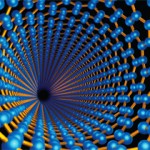Pre–B cell colony-enhancing factor/visfatin, a new marker of inflammation in rheumatoid arthritis with proinflammatory and matrix-degrading activities. (Arthritis Rheum. 2007;56:2829-2839.)
Abstract
Objective: To study possible mechanisms that mediate induction of the recently described adipocytokine pre–B cell colony-enhancing factor (PBEF) in joints of patients with rheumatoid arthritis (RA), and to analyze whether levels of PBEF correlate with disease severity and whether PBEF itself has the potential to act as a proinflammatory and destructive mediator in RA.
Methods: RA synovial fibroblasts (RASFs) and monocytes were stimulated with Toll-like receptor (TLR) ligands, cytokines, and recombinant human PBEF or were transfected with PBEF expression constructs or with PBEF-specific small interfering RNA. Production of interleukin-6 (IL-6), IL-8, and tumor necrosis factor–a (TNF-a) was measured by enzyme-linked immunosorbent assay, and expression of matrix metalloproteinases (MMPs) was assessed by real-time polymerase chain reaction. PBEF expression in synovial tissue, synovial fluid, serum, and SFs was assessed by immunohistochemistry, in situ hybridization, Western blotting, and enzyme immunoassays.
Results: In RASFs, PBEF was up-regulated by TLR ligands and cytokines that are characteristically present in the joints of patients with RA. In synovial tissue, RASFs were the major PBEF-expressing cells. A predominance of PBEF was found in the synovial lining layer and at sites of invasion into cartilage. Levels of PBEF in serum and synovial fluid correlated with the degree of inflammation and clinical disease activity. Moreover, PBEF itself activated the transcription factors NF-kB and activator protein 1 and induced IL-6, IL-8, MMP-1, and MMP-3 in RASFs as well as IL-6 and TNF-a in monocytes. PBEF knockdown in RASFs significantly inhibited basal and TLR ligand-induced production of IL-6, IL-8, MMP-1, and MMP-3.
Conclusion: Our findings establish PBEF as a proinflammatory and destructive mediator of joint inflammation in RA and identify PBEF as a potential therapeutic target.
Adiponectin is a mediator of the inverse association of adiposity with radiographic damage in rheumatoid arthritis. (Arthritis Rheum. 2009;61:1248-1256.)
Abstract
Objective: Recent reports have suggested that increasing adiposity may protect against radiographic damage in rheumatoid arthritis (RA). We explored the role of serum adipokines (adiponectin, resistin, and leptin) in mediating this association.
Methods: Patients with RA underwent total-body dual X-ray absorptiometry for measurement of total and regional body fat and lean mass, abdominal computed tomography for measurement of visceral fat area, and radiographs of the hands and feet scored according to the modified Sharp/van der Heijde (SHS) method. Serum levels of adipokines were measured and cross-sectional associations with radiographic damage were explored, adjusting for pertinent confounders. The associations of measures of adiposity with radiographic damage were explored with the introduction of adipokines into multivariable modeling as potential mediators.
